|
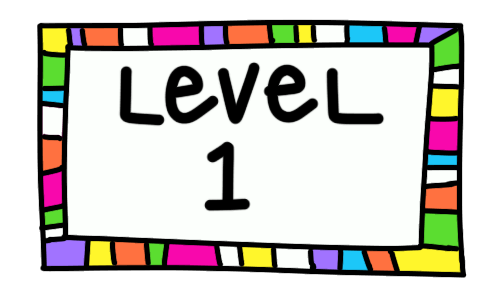
Suitable for Level
1 (Prep)
Simon Says
All stand up. The leader
(Simon) picks certain verb action signs and others have to follow exactly if
Simon signs “S SAYS”. Those who followed the action without “S SAYS” sits
down. Good for introduction on Transposition.
Sign-a-long Story Book
Use a big book with lots of
characters and actions. Introduce
signs for the most used words in the book, e.g. DOG, BOY, etc.
Sign and mime as you “read
aloud” the book, and have the children copy you and participate in the
characters’ actions and signs.
Class Mix and Match Cards
Students sit in a circle. Place
sign cards and their matching pictures
or words.
Students take turns in finding matching pairs and lining them up in the
middle of the circle.
|
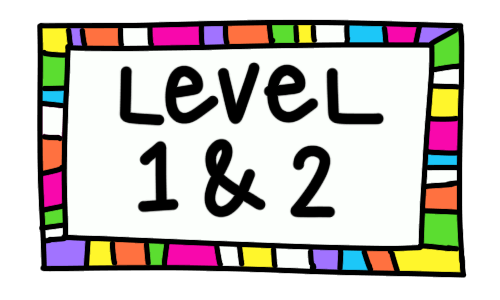
Suitable for Levels 1 & 2 (Prep - Grade 2)
Hot
and Cold
Teach students three signs:
WARM, HOT, COLD. One person wait outside while others hide an object.
The
WARM, HOT, COLD signs are given by
other students give
hints where to find the object - when the person
comes back inside to look for the object,
and moves away from
the object, the students sign COLD. If
nearer to the object, WARM.
If the person is almost where the object is, HOT. Teach sign stresses.
Whole Class Arrange in Order
Give each students a sign card,
and they arrange themselves in alphabetical order. Afterwards, they all sign
it out in turns.
Memory
Students in threes or four,
using Auslan picture sign cards and matching picture cards. Students put
cards face-down, mix them up
and
taking turns
flipping
over two
cards and matching them. If
they made a match they can keep the cards.
Guess What I'm Holding
After students have learnt the
signs of various objects, put objects in a sack. A volunteer takes out an
object, which is hidden with a piece of cloth.
The class signs what they think the object
is. The student with the
object gives a YES or NO sign.
Dress Up Competition
Place clothes,
e.g. hat, sunglasses, gumboots, raincoat, jumper, scarf, etc. on a table.
Have two teams of six students lined up away from each other with the table
in the middle. Label the students 1 to 6. Sign, “HOT….6” and the student
number 6 from both groups rushes to the table and quickly find the summer
clothing item and put it on, such as cap, or sunglasses. The one to put it
on first wins. Can use different signs such as, “Wear
something RED…”
or the clothing item itself, e.g. "GLOVES".
|
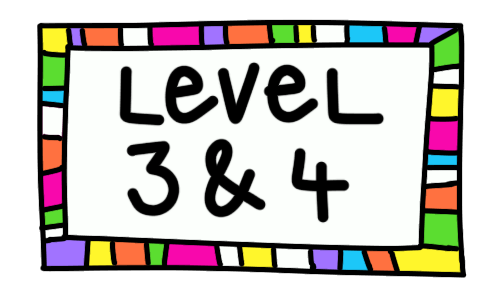
Suitable for Levels
3 & 4 (Grades 3 - 6)
Auslan Whispers
Four groups, lined up, the four
in front of the
line face you, the others face
in opposite direction. Each person at the front of the line is given an
Auslan sign or message. They then turn and tap on the shoulder of the next
person in their line and give the message as correctly as they can, and so
on, until the last person in the line receives the message. If the
last persons is able to sign the message correctly, their line receives a
point.
The Auslan messages can be single signs, facial expressions,
mime, alphabet, numbers,
instructions, etc.
Hang Man
The person guesses a word and
writes lines underneath the invisible
letters of the word. The
rest of the class signs a random alphabet.
Each time an
alphabet
guessed
is not in the word, the person
draws a hangman
line. The one who correctly guesses the whole word gets to be the next
person to write on board.
Pac
Man
Students spread around the
room. The Auslan teacher makes a sign or spells a word – students put their
hands up if they know. The first hand up to get it right moves one step
closer to the nearest person standing next to them. The goal is to tap the
others on the shoulder and put them out of the game. The last person
standing wins.
Race to the Table
After the students have been
familiarised with sign categories (eg. signs in FOOD, such as APPLE, ORANGE,
LUNCH, etc), group into four teams. Put picture sign cards on a table a
distance away. A student from each team come up to the front. The Auslan
teacher signs a word, once the sign is correctly identified on a picture
chart, the two students rush to the table and find the correct picture sign
card. The person with the correct sign card gets a point for his/her team.
Word on the Back
Tape word cards on each
student’s back. All the students have to describe and mime
to each other
what the word on other’s back
looks like, until all have an idea. Afterwards each student writes on the
board what they think their word is.
Picture on the Back
Tape picture cards one on each
student’s back. All the students have to describe to each other what the
picture on other’s back looks like, until all have an idea. Afterwards each
student draw on the board what they think their picture looks like.
Wise Man Fingerspelling and Sign
Two teams, line up. Fingerspell
a word to the two people in front of their lines, the first one to point to
the correct picture on the chart
remains in the game and goes to the back of their line. The other is out.
Continue until the last remaining person wins.
Wise Man Fingerspelling and
Marker
Two teams, line up. Fingerspell
a word to the two people in front of their lines, and the first one to race
to the whiteboard and write the word correctly gets a point. Good for words
where there are no signs, e.g. names, places, and initialisation (KK =
kitchen).
Who
Began?
Students sit in a circle and
play a mirror game. One person signs in a rhythmic pattern, and all to
follow suit. When the class is familiar with playing the game,
a volunteer
goes out of the room while a leader is chosen.
The volunteer
comes back in the circle and tries to identify the leader as the leader
keeps changing the rhythmic signs and others follow suit.
Human Battleships
Groups of students stand around
their tables (ships). Student A
picks Student B
from another ship and fingerspell a
word. If Student B
gets
the answer in
sign right,
Student A
sits. Once a whole ship is sitting that ship is sunk.
Go
Fish
Two sets of picture cards.
Students can play in twos or threes. Each has seven cards.
Student A
asks student B,
“YOU HAVE MOTHER?’ student B:
“NONE’, student A
picks up a card from pile. Student B
asks student C,
“YOU HAVE…?” and so on. If there is a matching pair, they put it down on
table.
Guesstures
Four groups, one person from
each group is shown a picture card. They go back to their groups and try to
mime the picture that is on the card. If the group guesses it correctly
before others, they get a point. Each student in the group takes turns.
Speedy Revision
Pairs sit and face each other
with a pen and paper. Decide on a category to cover, e.g. family, food, etc.
In one minute, the student has to fingerspell and sign as many words as s/he
can and his/her partner writes them down. Afterwards, tally the number of
signs covered. Reverse player and continue. Add points. The group with most
points wins.
Productive and Receptive
Fingerspelling
Students practice on their
fingerspelling reception and expression themselves – ask students to write
down their own list of ten words, and then work in pairs, the first student
to spell while the other writes, and vice-versa. Afterward, students correct
their answers.
Brainstorm Iconic Vocabs
In groups, students
are given a category to brainstorm iconic vocabs,
and share with class,
e.g. SPORTS, HOUSE, ANIMALS, MUSIC, OCCUPATION, etc.
Group Mime Story
Each group is given a short
story, and they have to use mime to show what the story is about. They can
mime in unison or have individual roles.
Class Survey
Students collect information
from others in Auslan, to create a graph display
and
give an Auslan presentation on their
survey (using numbers, BOYS, GIRLS, and related signs).
Secret Club
Think of a secret sign and
others try to enter in by guessing various signs. Those who can come in are
the ones with the same secret password, e.g. signs with “B” handshape. Other
password families can be: school related, e.g. book, hat, library, etc. (In
English, they use words that ends with “ed”, or words beginning with “H”,
and so on).
Read Back Skills
Fingerspell or sign words from
a list, and have students write them down. Write down the answers on the
board for students to correct themselves or their partner’s paper.
Guess the Classifier
Students
sit in circle, and volunteer
to describe something using
classifiers, showing its shape, size and texture. Others guess what it is
and give the correct sign. The person describing the thing nods or shakes
head.
Match Pictures with Signs
Students work in pairs, one
with a list of words, and other with matching pictures. The student with the
list of words, signs word to the partner, and the partner finds the correct
picture and places it in the correct order, and so on.
|
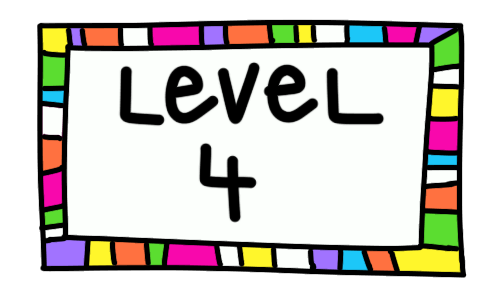
Suitable for Level
4 (Grades 5 & 6)
Clap and Click
Students sit in a circle. They
pick their favourite signs. Go through each student’s signs. Make
a motion rhythm
that repeats over and over
– clap on lap, clap hands, and click hands. Once students are comfortable
with the rhythm, sign one of the student’s signs on the click rhythm, eg.
TURTLE. The person with the TURTLE sign has to sign another person’s sign on
the next click while keeping up with the rhythm as with the rest of the
class.
Charades (Who Am I?)
A person sits in front of
class, with their back to the whiteboard. Write a familiar famous person’s
name on the board above the student. The
rest of the class mimes the
famous person until the student correctly guesses the famous person.
Relay Races
Four teams, line up, a distance
from the board. Give a HMLOE, eg. HANDSHAPE #1. A student from each team
race up to the board and write down a word, eg. BOY
(signs that use HANDSHAPE #1)
and race back up and gives the marker to the other person in their team,
until all have a go, or the first to 10 words are written.
Class Mime and Sign Drama
Whole class practice on a mime
and sign drama for the younger
children to watch.
Cause and Effect
Groups of four students stand
in a circle and tell a story using tokens and surrogates, e.g. starting with
a jogging action using surrogates
(real-life motion). The next student in the circle has to use tokens
(using fingers) to show the person running, and then
use a surrogate action
to show what happens next, e.g. falling down, and the next student shows it
in tokens, and so on. Students can work in groups of four to show to class.
Directions
Hide your object.
Use Auslan directions to direct the
partner to the hidden object (don’t
point and give away the game!).
Students can work in pairs, one hiding and describing and the other finding
the object.
Fluency of ABC’s and Names
Students practice on the
fluency of their ABCs. They can practice fingerspelling their names in a
smooth, fluent way. Show how vowels work by lifting up the fingers of the
insubordinate hand and pointing to these fingers. Write down a list of words
on the board
for pairs to work with to
improve the quality of their fingerspelling.
Handshapes Stories
Groups of four use three
specific handshapes to create a sign or mime story. Afterwards, they can
share their story with others.
|
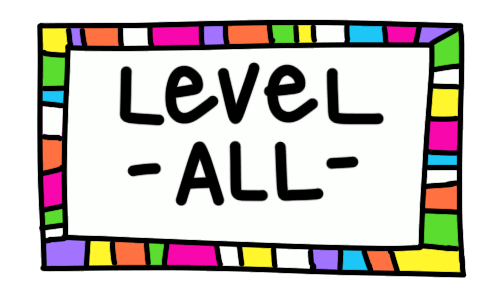
Suitable for all
levels (Prep - Grade 6)
Bingo
Each student has a bingo chart
and tokens. The Auslan teacher takes a picture or word card out of a
container and signs it to class. Those with the matching picture put a token
on their bingo chart. Have a A3 poster with all the
bingo
pictures on it to refer to if
students have difficulty remembering what the signs
represent.
The person who has tokens in a straight line on their bingo charts stands up
and signs PAH! Game over, swap bingo charts, and start again.
Time your Alphabet
Students in pairs time how fast
their alphabet is, and keep a record.
Octopus
Line students up one end of
court. Each student comes up with a vocabulary sign of a specific category
(or handshape, location, etc). Two students stand in the middle of the court
and sign a vocabulary. Those on the line with the same vocabulary (or
handshape, location, etc) must dodge to the other end. This continues for
everyone (or left overs) to run to the other end. Those tagged must stay on
spot and become as octopus, trying to tag the remaining students without
moving from their spot.
Wise Man Sign and Point
Two teams, line up. Sign a word
to the two people in front of their lines, the first one to point to the
correct picture on the chart remains
in the game and goes to the back of their line. The other is out. Continue
until the last remaining person wins.
What's Missing?
Bring various items on the
table, and have students learn signs for each one. Ask students to close
their eyes. Remove an item and hide it. Stomp on floor. Students try to
identify and sign the missing item.
Painting Handshapes
Students select an animal to
paint using the animals’ handshape prints.
Emotion Mirrors
Students in pairs play mirrors
with each other, using facial expressions, gestures,
etc. They can devise a dramatic story to show to class
afterwards.
Guess This Sign
After students have learnt new
signs, a volunteer to go up to front and select a sign from the board and
signs it to the class. The class tries to guess what sign it is.
Iconic Sign
Write iconic signs on board,
and let the students guess what the signs are. Example – door, stairs,
banana, etc
Inflect the Verb
Write down some verbs, and ask
students to demonstrate on how to make it excited, bored, tiring, slow,
fast, etc. Use this opportunity to explain how signs change using
facial expression,
intensity, speed, and size.
HOLME Group Photos
Group photos – a group think of
signs with a common
handshape,
take
photos of these signs,
then make a poster of their handshape
signs. Other groups do
the same thing for different handshapes, or for orientation, location,
movement and expression. The posters are put up on the wall for classroom
reference.
Translate Poems
Ask class teacher what are the
students’ favourite poems. Have the
poem on A3 sized
paper and ask students
to brainstorm how to sign it visually in Auslan.
Afterwards, videotape students signing the
poem.
|
|